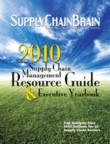
Visit Our Sponsors |
|
|
|
|
|
|
|
|
|
|
|
|
|
|
|
|
|
|
|
|
|
|
|
|
|
|
|
|
|
|
|
|
|
|
|
|
|
|

Creating sustainable improvements in efficiency is the biggest challenge with regards to inventory performance. Based on the 2009 working capital performance research by REL among the largest 1,000 public U.S.-headquartered companies, 51 percent of companies improved their Days Inventory On-hand (DIO) performance in 2008. Only 46 percent of those companies improved in two consecutive years and less than 17 percent in three consecutive years. The 10 companies with the largest gains over the last three years, with improvements in each year, released an average of over $260m a year from inventory.
The most successful companies have a robust product range management approach that classifies products based on both value and risk drivers and leverage this differentiated view to set policy in a variety of supply chain areas such as product rationalization, service level agreements, safety stock management, postponement strategies, etc.
A challenge to supply chain professionals is to better balance product cost, whether purchased or manufactured, with a leaner, more flexible supply chain. Some products could have a low-cost strategy based on volume and predictable demand patterns, but others with more erratic demand may require a strategy focusing on greater flexibility. Reducing lead-times at the expense of cost may seem inefficient, but the reduction in lead-time can provide insurance against the risk created by inability to accurately forecast demand, which may otherwise result in excess inventory, write-offs and lost customer sales.
The Outlook
Dropping sales and brute force cuts enabled absolute inventory reductions this past year, but inventory efficiency slipped. The challenge for 2010 will be to prevent inventory from tying up an increasing amount of cash as sales increase by improving inventory efficiencies. Improvements will require a cross-functional approach, including sales, marketing, engineering, procurement, operations and executive-level support to re-evaluate product range approaches, shift priorities and realize sustainable inventory savings.
RELATED CONTENT
RELATED VIDEOS
Timely, incisive articles delivered directly to your inbox.

